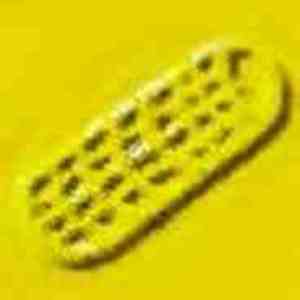The University of Texas M. D. Anderson Cancer Center and Rice University have collaborated in a project that has resulted in a new and non-evasive treatment to destroy liver cancer.
First the cancer cells are treated with carbon nanotubes, then radio waves are used to heat up the nanotubes. And only the cancer is destroyed, without having any effect on the surrounding healthy tissues. Carbon nanotubes are relatively simple structures. They are hollow cylinders made of pure carbon and are only a billionth of a meter – a nanamete- in width.
In their pre clinical trials with rabbits, the liver cancer was completely destroyed and they did not notice any side effects except that some of the healthy liver tissue right next to the tumors did become heat damaged because some of the nanotube leaked out of the tumor.
In this experiment they injected a solution made up of single-walled carbon nanotubes directly into the rabbit’s tumors. Four of the rabbits were then given two minutes of radiofrequency treatment and the tumors were destroyed.
The rest of the rabbits received one or the other of the treatments only. And their tumors were not damaged or destroyed in any way.
In a separate experiment done in the lab, they were able to completely destroy two lines of liver cancer cells as well as one pancreatic cancer cell line.
One of the biggest problems with the process is getting the nanotubes to get to where they are supposed to be, just in the cancer cells, but they are working on the problem. They are conducting research to find a way to bind the nanotubes to antibodies or some other type of agent, that are geared to target molecules on cancer cells, but many of the molecules that they want to target on the cancer cells, also exist on regular ones.
This new process is not to be confused with a different technique that is currently being used. This one is called radio frequency ablation and is much more invasive. In this one needle electrodes are inserted directly into the tumors. It is able to partially destroy about 5 to 40% of the tumors. It also damages normal tissue and 10% of these patients develop complications. It is only used to treat liver, kidney, breast, lung and bone cancers.
The research is in its very early stage yet and full clinical trials are expected to be about 4 or 5 years in the future.
The lead researcher on the project is Steven Curley, M.D., professor in M. D. Anderson’s Department of Surgical Oncology, entrepreneur John Kanzius of ThermMed LLC. Mr. Kanzius is the inventor of radiofrequency generator that they used in the experiments. He is a cancer survivor himself
The lead researcher at Rice was the late Richard Smalley, who passed away from cancer. He was the founder of Rice’s Carbon Nanotechnology Laboratory and one of the best experts on carbon nanotubes world wide and a Nobel Prize winner and Rice materials scientist professor Boris Yakobson, Ph.D. The rest of the team are Christopher J. Gannon, M.D., also of M. D. Anderson’s Department of Surgical Oncology, and Paul Cherukuri, Ph.D. of Rice’s Carbon Nanotechnology Laboratory and Department of Chemistry; Carter Kittrell, Ph.D., R. Bruce Weisman, Ph.D., Matteo Pasquali, Ph.D., and Howard K. Schmidt, Ph.D., all of Rice; and Laurent Cognet, Ph.D., of Rice and the Centre de Physique Moléculaire Optique et Hertzienne, Université Bordeaux, France.
Funding for the research came from an American Association of Cancer Research Littlefield Grant, NASA and the Houston-based Alliance for NanoHealth, the National Science Foundation, the Center for Biological and Environmental Nanotechnology and the Fulbright Foundation.
Source: The University of Texas M. D. Anderson Cancer Center http://newswise.com/



